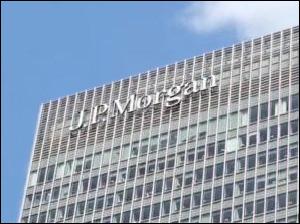Courtesy of Pam Martens.
Yesterday the Inspector General of the Federal Reserve System released a highly abbreviated report on the New York Fed’s supervision of JPMorgan’s Chief Investment Office (CIO) that spawned the $6.2 billion in exotic derivative losses in 2012 – using hundreds of billions of dollars in FDIC insured deposits to make those wild bets. The debacle became known as the London Whale since the outsized trades were conducted in London.
The four page summary report that was sanitized for the public includes two bombshells for those who took the time to read the report carefully. First, the Inspector General specifically notes that “we selected July 2004 through April 2012 as the time period for our evaluation. July 2004 marked JPMC’s merger with Bank One Corporation (Bank One), and JPMC created the CIO in 2005.”
What is the relevance of that nugget? We learn for the first time that no Chief Investment Office existed at JPMorgan until after the Bank One merger which brought Jamie Dimon on board JPMorgan for the first time. Dimon was CEO of Bank One at the time of the merger in 2004. The deal included the terms that Dimon would immediately become President and Chief Operating Officer of the combined firms and step into the role as CEO in 2006.
Next we are told by the Inspector General that New York Fed staff recommended no less than three examinations of the Chief Investment Office – in 2008, 2009 and 2010. But the examinations just never came to fruition.
The report offers three extremely wussy explanations for why there was no comprehensive review of what was going on in the Chief Investment Office by the New York Fed: “FRB New York did not conduct the planned or recommended examinations because (1) the Reserve Bank reassessed the prioritization of the initially planned activities related to the CIO due to many supervisory demands and a lack of supervisory resources, (2) weaknesses existed in controls surrounding the supervisory planning process, and (3) the 2011 reorganization of the supervisory team at JPMC resulted in a significant loss of institutional knowledge regarding the CIO.”
Pure poppycock. We can think of a far more realistic explanation for why no meddling into high risk trading at JPMorgan using depositors’ savings was ever conducted in 2008 through 2010: Jamie Dimon sat on the Board of Directors of the New York Fed – his bank’s regulator – from 2007 through 2012.
(Emphasis mine – Ilene)
…




